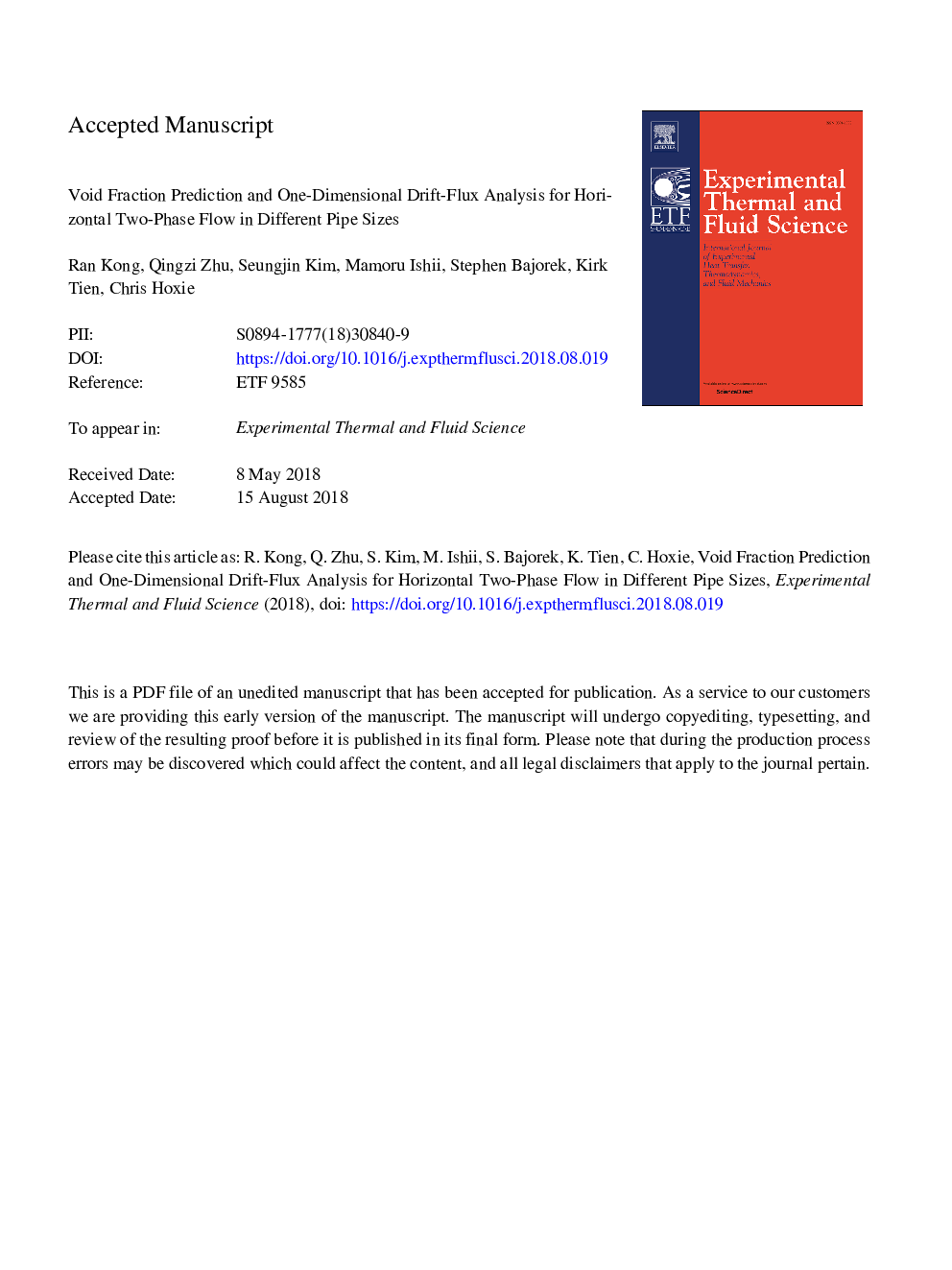| Article ID | Journal | Published Year | Pages | File Type |
|---|---|---|---|---|
| 11003388 | Experimental Thermal and Fluid Science | 2018 | 47 Pages |
Abstract
The current work seeks to perform the one-dimensional drift-flux analysis for horizontal gas-dispersed flow, to provide closure models for void fraction and to investigate the relative motion between gas and liquid phases. A reliable experimental database for void fraction and bubble velocity is first established over a wide range of flow conditions for bubbly, plug and slug flows in different pipe sizes, due to the limitations of existing database. It is found that the effects of flow regime and pipe size on the drift-flux analysis are insignificant. The drift velocity is found to be negative in horizontal bubbly flow. This is consistent with the conclusion by the ãαã-ãβã analysis, where the slope is found to be greater than one. This indicates that the gas phase moves slower than the liquid phase in horizontal bubbly flow. The analysis also indicates that the horizontal plug and slug flows are relatively more homogeneous than horizontal bubbly flow. As such, the homogeneous flow model can predict the void fraction better for plug and slug flows. The current drift-flux analysis provides closure relations for C0 and ããVgjãã that can be employed in TRACE, while existing closure relations are developed for vertical flow and cannot be used for horizontal flow prediction. In addition, various void fraction models in literature are evaluated. It is found that the correlations modified from vertical flow generally cannot predict the void fraction well for horizontal flow. The correlations for plug and slug flows by Franca and Lahey, and Lamari underestimate the void fraction, which may be because these correlations are developed for relatively low jf conditions, while the current work focuses on conditions at jf greater than 2.0â¯m/s.
Related Topics
Physical Sciences and Engineering
Chemical Engineering
Fluid Flow and Transfer Processes
Authors
Ran Kong, Qingzi Zhu, Seungjin Kim, Mamoru Ishii, Stephen Bajorek, Kirk Tien, Chris Hoxie,
